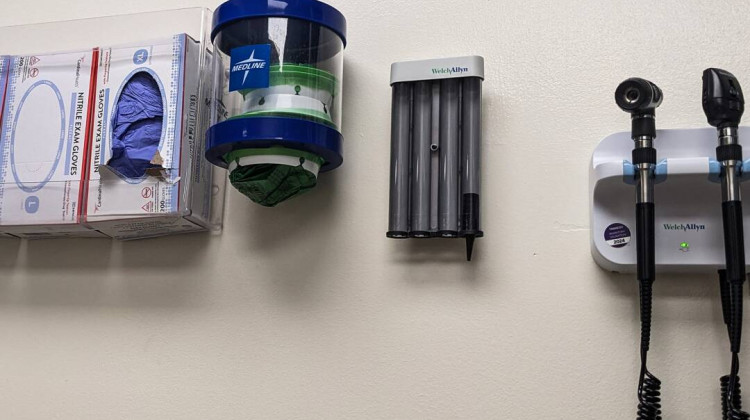The U.S. will still power most of its homes and cars with fossil fuels by 2050 if there aren’t more policies that encourage renewable energy and electric vehicles. That’s according to the U.S. Energy Information Administration’s Annual Energy Outlook.
It said without those policies, how we get our power will mostly be based on cost — and natural gas and oil are still projected to stay relatively cheap in the future. That could hinder the Biden administration’s goal to get to net zero emissions by 2050.
But the EIA’s report primarily looks at current federal and state laws already on the books. It didn’t factor in the Biden administration's overarching goal or clean energy commitments from utilities and corporations. Jesse Kharbanda is the executive director of the Hoosier Environmental Council.
“Honda is going to go all electric by 2040, GM is going to go all electric by 2035. If you factor that all in, I think that the mix is going to be a lot different than what is projected by EIA in 2050," he said.
Join the conversation and sign up for the Indiana Two-Way. Text "Indiana" to 73224. Your comments and questions in response to our weekly text help us find the answers you need on statewide issues.
Danielle McGrath is the president of the Indiana Energy Association. She said the way Indiana gets its energy has changed dramatically over the past 15 years. The state produces almost half as much electricity from coal as it did in 2007.
“When you look to the immediate future and what's in the queue for what's planned to be built within the state to serve Indiana. It is nearly all renewable energy at this point," McGrath said.
But some Indiana utilities have more ambitious goals than others — and several of them intend to build new natural gas plants in the future.
The EIA did a separate analysis and found that — even when utility clean energy goals were taken into account — it didn't make that much of a difference in the country's energy mix.
The agency said if things stay as they are now, 44 percent of the electricity generated in the U.S. will be from fossil fuels — with natural gas being the largest source.
McGrath said we need natural gas to back up sources like wind and solar — though many environmental groups disagree.
Kharbanda said a federal carbon tax that gives money back to households and incentives for rooftop solar in Indiana would help get to net zero emissions. The Hoosier Environmental Council has advocated for things that make solar more affordable — such as third-party financing, PACE financing, and community solar.
The EIA energy outlook also shows that population growth will likely outpace energy efficiency improvements in the U.S. — leading to more demand for energy. Kharbanda said bringing Indiana's energy efficiency building codes up to date and re-instating the state's energy efficiency resource standard could help address that demand in Indiana.
Contact reporter Rebecca at rthiele@iu.edu or follow her on Twitter at @beckythiele.
Indiana Environmental reporting is supported by the Environmental Resilience Institute, an Indiana University Grand Challenge project developing Indiana-specific projections and informed responses to problems of environmental change.
 DONATE
DONATE







 Support WFYI. We can't do it without you.
Support WFYI. We can't do it without you.